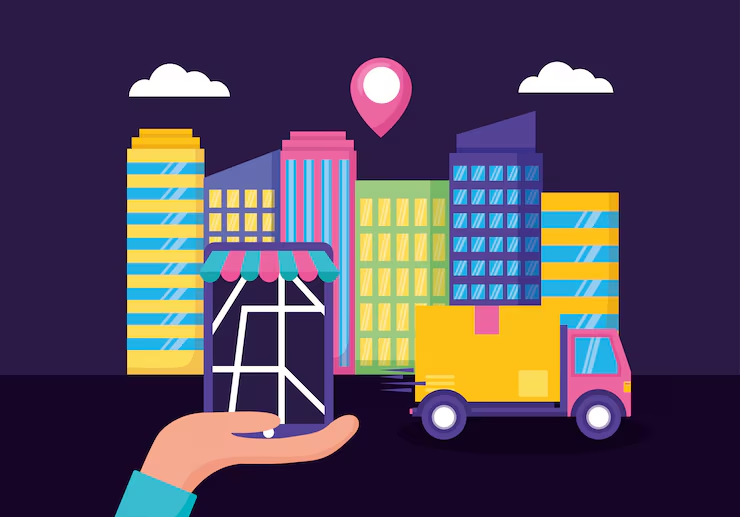
India’s delivery ecosystem is undergoing a massive transformation. What was once limited to postal mail and courier services has now become a hyper-connected, tech-driven, and ultra-competitive arena where speed, scale, and customer satisfaction reign supreme.
With the rise of e-commerce, quick commerce, and digitized logistics, the country is witnessing the emergence of a next-gen delivery ecosystem — one that’s agile, data-driven, and customer-first. But building this futuristic infrastructure isn’t without its challenges. From infrastructural gaps to operational bottlenecks, several roadblocks still need to be addressed. At the same time, the space offers tremendous opportunities for innovation, investment, and growth.
This blog explores both sides of the coin: the hurdles businesses must overcome and the strategic advantages waiting to be seized.
The Rise of the Next-Gen Delivery Landscape
Over the past decade, India has seen explosive growth in digital commerce. From food delivery and e-commerce to direct-to-consumer (D2C) brands and local kirana integrations, the need for faster, more efficient delivery has skyrocketed.
Several trends are fueling this shift:
- Smartphone penetration and digital payments
- Consumer demand for instant gratification
- Proliferation of quick commerce and hyperlocal services
- Increased investment in supply chain technology
Next-gen delivery networks are defined by tech-enabled logistics, real-time visibility, last-mile efficiency, and integration with multiple sales and fulfillment channels. But achieving this nationwide, across urban and rural areas, is no small feat.
Key Challenges in Building India’s Modern Delivery Infrastructure
1. Fragmented Infrastructure
India’s logistics and transportation infrastructure is still developing. While major metros enjoy a decent network of roads and warehouses, tier-2, tier-3 cities and rural areas face significant bottlenecks:
- Inadequate road networks
- Limited warehousing capacity
- Poor last-mile connectivity
- Dependence on unorganized players
For a truly next-gen delivery system, India must invest in logistics parks, automated sorting centers, and better connectivity between urban and rural nodes.
2. High Last-Mile Delivery Costs
Last-mile delivery — the final leg of the journey from fulfillment center to customer — accounts for nearly 50% of the total logistics cost. It is also the most complex due to:
- Traffic congestion
- Address inaccuracies
- Low order densities in certain areas
- High customer expectations on speed
Many quick commerce platforms promise deliveries in under 30 minutes, which adds pressure on logistics partners to deliver faster while keeping costs low.
3. Lack of Skilled Manpower
While technology is transforming logistics, the sector still relies heavily on human intervention — from warehouse handlers to delivery personnel. The lack of skilled and trained manpower can cause delays, order mishandling, and operational inefficiencies.
As the ecosystem scales, there’s an urgent need to upskill logistics staff in:
- Inventory management
- Tech-enabled warehousing
- Route optimization tools
- Customer service
4. Sustainability Concerns
With faster delivery cycles come greater environmental costs — increased packaging waste, fuel usage, and carbon emissions. Quick commerce, in particular, raises questions about long-term sustainability, especially when single-item orders require individual trips.
Balancing convenience with sustainability is one of the biggest ethical and operational challenges facing the next-gen delivery model.
5. Regulatory and Compliance Hurdles
From data privacy laws to labor regulations and inter-state logistics rules, companies must navigate a complex legal landscape. For delivery startups and new players, ensuring compliance across multiple jurisdictions can be resource-intensive.
Opportunities That Can Reshape the Ecosystem
While the challenges are real, so are the opportunities. With the right mix of policy support, technological innovation, and market demand, India’s next-gen delivery infrastructure can set global benchmarks.
1. The Boom in Quick Commerce
Quick commerce — the model that delivers essential items like groceries and daily-use products in under 30 minutes — has exploded in urban India. Cities like Bengaluru, Mumbai, and Delhi have become hotspots for experimentation and expansion.
Companies are using localized “dark stores,” AI-driven route optimization, and micro-fulfillment centers to make deliveries faster than ever before. Some notable quick commerce examples include platforms like Zepto, Blinkit, and Swiggy Instamart.
These businesses are proving that there is a viable, scalable model for ultra-fast delivery, and this innovation could soon trickle into other sectors such as medicines, electronics, and even fashion.
2. Integration of Smart Technologies
The logistics tech space is booming, with companies investing in:
- AI and Machine Learning for demand forecasting and intelligent routing
- IoT sensors for real-time fleet tracking and temperature monitoring
- Robotic process automation in warehouses and sorting facilities
- Drones and autonomous delivery vehicles (still in pilot phases)
Such advancements can drastically improve efficiency, reduce human error, and lower operational costs, especially in high-volume delivery zones.
3. Public-Private Collaborations
To truly build a robust delivery ecosystem, collaboration between government bodies and private players is essential. The government’s PM Gati Shakti initiative, for example, aims to unify various transportation and logistics infrastructure planning across ministries.
Policy reforms supporting ease of doing business, digital logistics platforms, and infrastructure development will encourage more innovation and capital flow into the delivery ecosystem.
4. Rural Market Penetration
There is untapped potential in rural and semi-urban markets, where e-commerce adoption is rising but infrastructure is lacking. With smartphone penetration increasing and internet access becoming more affordable, the demand is already there.
Companies that crack the rural delivery code through mobile fulfillment units, localized partnerships, and tech innovation can open a massive new frontier for growth.
5. FMCG and D2C Synergies
Fast-Moving Consumer Goods (FMCG) companies are increasingly investing in direct-to-consumer delivery models. As more consumers look to order groceries, personal care, and household items online, FMCG brands are partnering with logistics providers or building their own delivery capabilities.
Investors watching this space may want to explore the List Of Best FMCG Stocks to tap into this growing intersection of manufacturing and modern logistics.
Building a Resilient and Scalable Future
To ensure India’s delivery ecosystem meets the needs of a growing digital economy, stakeholders must adopt a long-term, sustainable, and collaborative approach.
What Needs to Happen:
- Invest in training and upskilling: Build a skilled logistics workforce ready to use tech tools.
- Scale green logistics: Embrace electric vehicles, reusable packaging, and optimized routing.
- Support infrastructure development: Encourage investment in rural connectivity, highways, and warehousing.
- Foster innovation ecosystems: Incubate logistics tech startups and pilot emerging solutions.
- Ensure inclusivity: Design systems that work for both large metros and underserved regions.
Conclusion: The Road Ahead
India stands at the cusp of a delivery revolution. The transition to a next-gen ecosystem is both complex and inevitable. While challenges like infrastructure gaps, high costs, and sustainability concerns persist, the opportunities in technology, market expansion, and consumer behavior are far greater.
By addressing foundational issues while embracing innovation, India can build a delivery network that’s not just faster — but smarter, greener, and more inclusive. The future of commerce depends on it.
As businesses, investors, and policymakers align their strategies, one thing is clear: the race to redefine delivery in India has only just begun.







